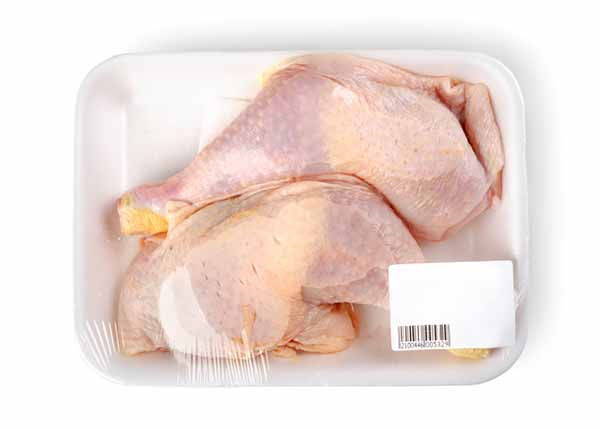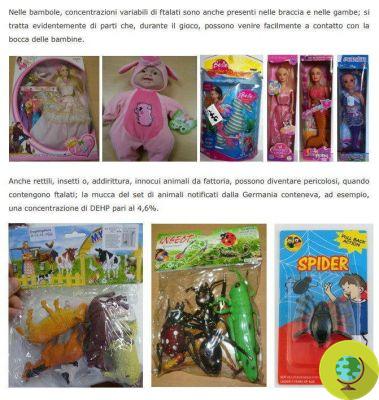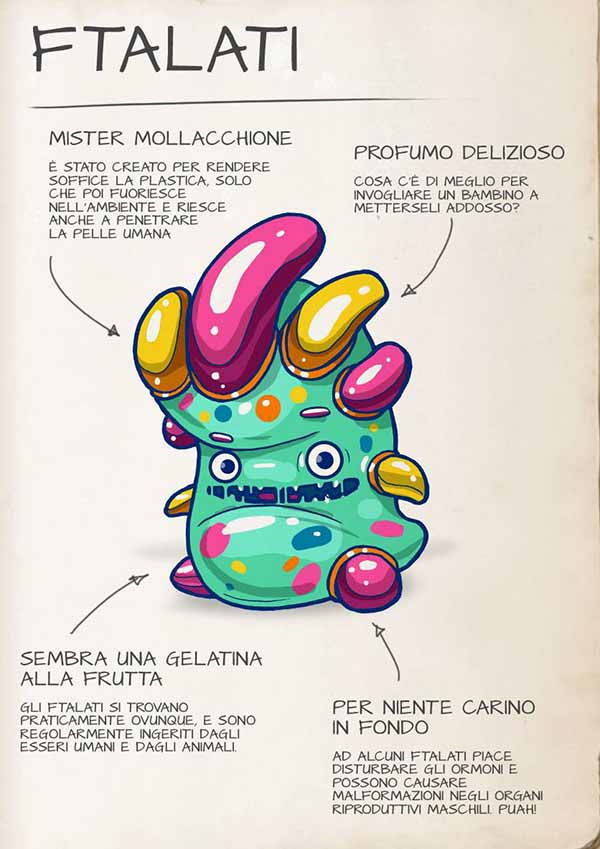Among the various chemical compounds of industrial use we find the phthalates present in many commonly used products. Let's find out what they are and why it would be better to avoid them.
Don't store avocado like this: it's dangerousAmong the various chemical compounds of industrial use we find the phthalates present in many commonly used products. Let's find out what it is and why it would be better to avoid them.
Index
Phthalates, what are they
Phthalates are a family of organic chemicals that come from oil used as plasticizing agents but also as solvents and optimizers of the consistency and yield of various products. It is about the most popular plasticizers in the world and used for decades in the processing of polyvinyl chloride (PVC) which help to make it more flexible and soft.
There are various types, all of them are in liquid form (they resemble oil) and are practically odorless, but they do not always have a plasticizing function.
The types of phthalates are:
- DINP - diisononyl phthalate
- DEHP – phthalato on bus(2-ethylesile)
- DNOP - dioctyl phthalate
- DIDP - diisodecyl phthalate
- BBP - butylbenzyl phthalate
- DBP - phthalate of dibutile
Phthalates, where they are found
Unfortunately, phthalates are still widely used in most of the products we use every day. They are found for example in the Nial Polish with the function of preventing it from disintegrating, in the perfume to make it last longer and in the handles for tools to make them more solid.
But the list of products that contain phthalates is really long: cosmetic creams, shampoos, adhesives, paints, pesticides, containers of various kinds (including food and fast food), bags, cables and packaging materials.
To recap phthalates can be found in:
- Nail polishes
- scents
- Creme
- Shampoo
- Tool grips
- Paints
- Wall Stickers
- Pesticides
- Food containers
- Bags
- Cavi
- Packaging materials
Not even food is exempt. A research conducted a few years ago in the United States highlighted which foods may contain phthalates. Also listed whole milk, cream and meat (especially the fatty one and poultry) due to the extensive use of these substances which began in recent decades which has contaminated the soil and therefore also the feed for animals. But above all there is the problem of the packaging in which food is wrapped which may contain phthalates and therefore these substances can migrate from plastic materials to the foods themselves. Margarine and cooking oils are also at risk.

Many then baby products at risk of phthalates (especially of Chinese provenance which unfortunately appear cyclically and are also seized on the European market), including:
- Dolls (especially those with sparkly dresses)
- Carnival masks
- Plastic animals
- cars
- Bath games
- Inflatable games
- Beach games
- Erasers and other stationery items
- Clothing (we recently told you about underwear for girls)
Phthalates, because it would be better to avoid them
There are many reasons why we should avoid phthalates, some of an environmental nature, others that affect our health. The most exposed to the risk of these substances are children which can also be affected by small doses of phthalates.
Being petroleum derivatives, phthalates have a very high environmental impactin addition to this, these substances once they arrive in the blood can cause serious damage to our body.
As of 2003 some studies have noted a correlation between phthalates and disorders in the development of male and female genitalia. In fact inside our organism these substances behave like endocrine disruptors, that is, they can have serious repercussions on our reproductive system. Subsequently it was also seen the danger of these substances present in perfumes and cosmetics on theincreased risk of type 2 diabetes.
The risks of exposure to phthalates for pregnant women are also very serious. The consequence could be the appearance of mental, motor and behavioral disorders such as hyper-reactivity, anxiety and depression. It is no coincidence that the use of phthalates, considered very dangerous substances, have a regulated use in the EU especially with regard to toys and products for children. As stated on the website of the Ministry of Health:
“Their use is not allowed at concentrations higher than 0,1%, neither in toys nor in articles intended for children; the reason for the restriction is due to the danger of exposure that can derive from chewing or sucking for long periods of time objects that contain phthalates ”.
 Download the complete pdf with the recommendations of the Ministry of Health
Download the complete pdf with the recommendations of the Ministry of Health
However, every year toys coming mainly from China are found and seized as they far exceed the limits of phthalates allowed.

Photo: Greenpeace
Phthalates have also been linked to obesity risk, certain types of allergies and thyroid dysfunction.
In summary, the phthalates are:
- petroleum derivatives
- endocrine disruptors that can damage the reproductive system
- dangerous even in small doses for children and pregnant women
- they increase the risk of type 2 diabetes
Phthalates, how to avoid them
According to a study published by Environmental Health Perspectives, it is possible to reduce the level of exposure to phthalates as well as Bps (bisphenol A) without much effort simply avoiding packaged foods as much as possible. Therefore, consume fresh foods in bulk, leaving those packaged in plastic or tin containers on the shelves. Also choose cosmetics and cleansers with good Inci. For your children instead prefer toys made of wood or other natural materials.
Other useful tips are:
- Always read the label while choosing PBA AND PVC Free products
- Avoid made in China or PRC
- Use glass, ceramic, stainless steel or wood objects and tools as much as possible
- Do not use polycarbonate plastics to store hot liquids
On phthalates, you may also be interested in:
- THE PHTHALATES PRESENT IN PERFUMES AND COSMETICS INCREASE THE RISK OF DIABETES
- SEX AND PVC: DO THE PHTHALATES IN PLASTIC REDUCE FEMALE LIBIDO?
- ALARM OF DANGEROUS CHEMICAL SUBSTANCES IN FAST FOOD FOODS: HIGH LEVELS OF PHTHALATES DETECTED
- PHTHALATES: EXPOSURE DURING PREGNANCY CAN CAUSE SERIOUS PROBLEMS TO BABIES
We try, as far as possible, to reduce exposure to these substances for the whole family, but we protect the little ones above all, as soon as they are in the belly! To learn more about phthalates and children, download the guide from the Ministry of Health


























